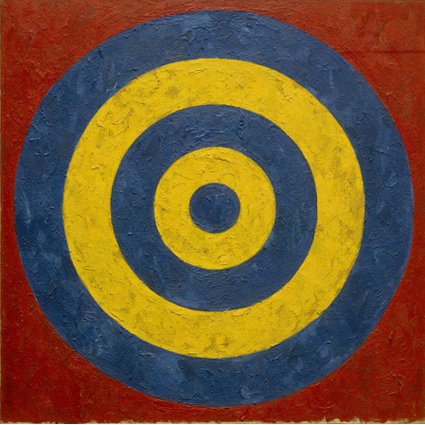Andrew Graham-Dixon puzzles over the inclusions and exclusions from 'American Art in the 20th Century' at the Royal Academy
Jasper Johns painted Target in 1958 and hit the bull's eye. Pollock? Rothko? Newman? Forget them (at least for the time being). Modern American painting had been reinvented yet again.
The picture remains one of the purest examples of Johns' more-than-meets-the-eye manner, as well as a demonstration of his ability to balance on several knife edges at the same time. The image itself is banal, but Johns' handling of paint is fantastically intricate, a veil of oil and collage that flickers from opacity to translucency and back again. Dumbness and profundity coexist uneasily on a three-foot by three-foot canvas; null-and-void subject matter is given inexplicably Old Masterly treatment. If Cezanne had painted dartboards instead of apples the result might have looked something like this.
It is hard to say what Johns was aiming at, exactly. An assertion of the artist's divine right to make a painting out of what the hell he likes? A reminder that paintings (like targets) are always a form of visual code, their meanings a matter of social convention? Johns leaves his audience guessing. The concentric circles of the painting also look like ripples spreading outwards. Target was a large stone thrown into the waters of 20th-century American art.
Johns' painting is encountered roughly half-way through ''American Art in the 20th Century'' at the Royal Academy, and it could stand as the exhibition's emblem: a thing of uncertain meaning to be puzzled over (and shot at). Norman Rosenthal and Christos Joachimedes, who have organised the exhibition, clearly see themselves as agents provocateurs and their show amounts, by definition, to a calculated act of presumption: an exhibition of American modern art selected and hung, for Chrissakes,...

Falling wide of the target
21-09-1993

